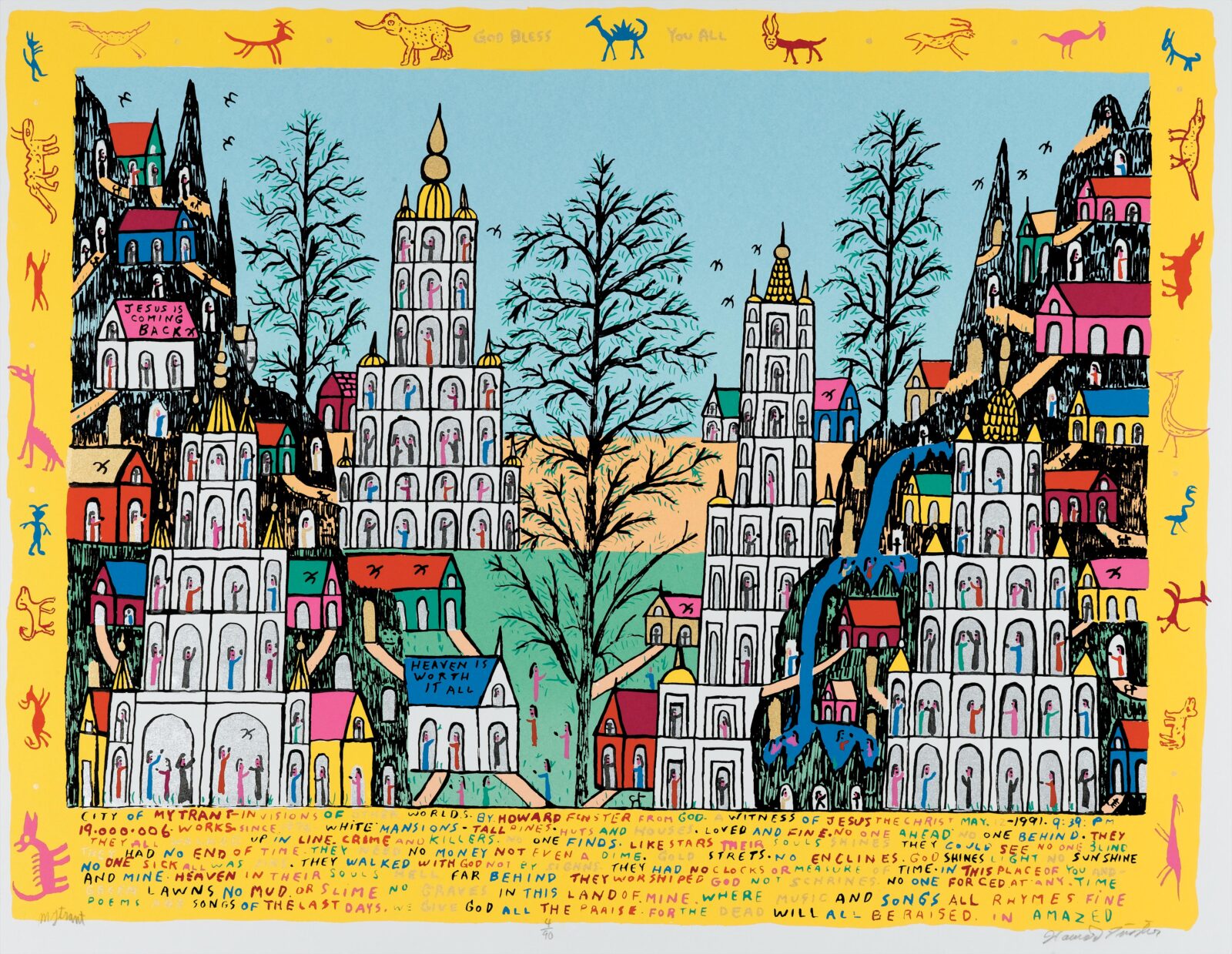And They All Sang Hallelujah

And They All Sang Hallelujah
And They All Sang Hallelujah, opens at the Morris Museum of Art on Saturday, April 15, 2023. Drawn entirely from the museum’s permanent collection, the exhibition comprises twenty-three works of art in a variety of mediums—photographs, collages, paintings, and sculpture—by Mose Tolliver, Margaret Ramsey, Clementine Hunter, and Howard Finster, and many others, and addresses the central role played by religion in the culture of the South. It remains on display through July 2, 2023.
The cultural landscape of the American South is shaped and often identified by many things, religion among them. In the popular imagination, religion in the South is distinguished not by its denominations—mainly Protestant, often Evangelical—but by its conservative fundamentalist orientation. The single largest denominational body is the Southern Baptist Convention, and the wide distribution of its many churches is often considered one of the salient characteristics of the region. Here, church attendance and church-associated activities play a significant role in the lives of communities and families.
From time immemorial, this important aspect of the life of the region has been explored by its visual artists, as demonstrated here by the work of William H. Clarke, Minnie Evans, Clementine Hunter, Mose Tolliver and others. Their work closely reflects Southern life, whose daily rituals include many that are specifically religious in nature—weddings, funerals, prayer meetings. (Religious imagery so suffuses life in the South that it should come as no surprise that Clementine Hunter’s first painting was of a baptism.) Clarke is an active, remarkably prolific chronicler of life in his native Nottaway County, Virginia. Minnie Evans’ work was generally untethered to a specific locality, though she lived the entirety of her long life in North Carolina. Clementine Hunter, perhaps the South’s best known folk artist, went one better, living at the same address, Melrose Plantation, from the time she was 15 until her death 87 years later. By contrast, Moses Tolliver (“Mose T,” as he signed his paintings—usually with a backward “s”), though, like the others, a child of the rural South, lived his adult life in Montgomery, Alabama. He turned to painting and religion after a crippling accident in the furniture factory where he worked.
This work—and its chronicle of the religious life of the region—is not altogether the province of the untutored and untrained. To demonstrate that we have also included examples of the work of some highly regarded photographers, including Kentuckian Shelby Lee Adams and Alabaman William Christenberry, who, thoroughly imbued with the region’s customs and conventions, carried the generally accepted practices of their youths with them when they moved North—Adams for his education and Christenberry to exercise his. From there, they continued to examine specifically Southern sites and mores through their work. Christenberry who settled in Washington, D.C., returned to Hale County, Alabama every summer for more than fifty years—almost to the end of his life—to take photographs, and Adams, now 72, resides principally in Western Massachusetts but documents his native Appalachia to this day. Frequent home visits refreshed their work. E. O. Goldbeck, a highly trained and successful commercial photographer who specialized in panoramic photography, spent the entirety of his career in his native Texas, and Esther Bubley, who grew up in Wisconsin, traveled the South extensively, taking photographs for the Office of War Information that documented the home front during World War II, and later for Life magazine.
